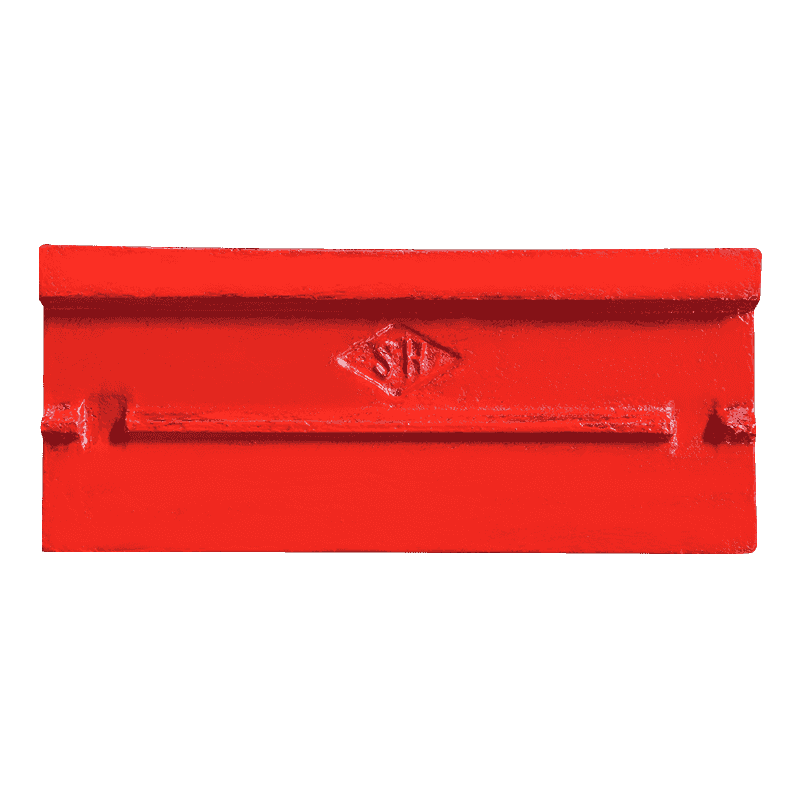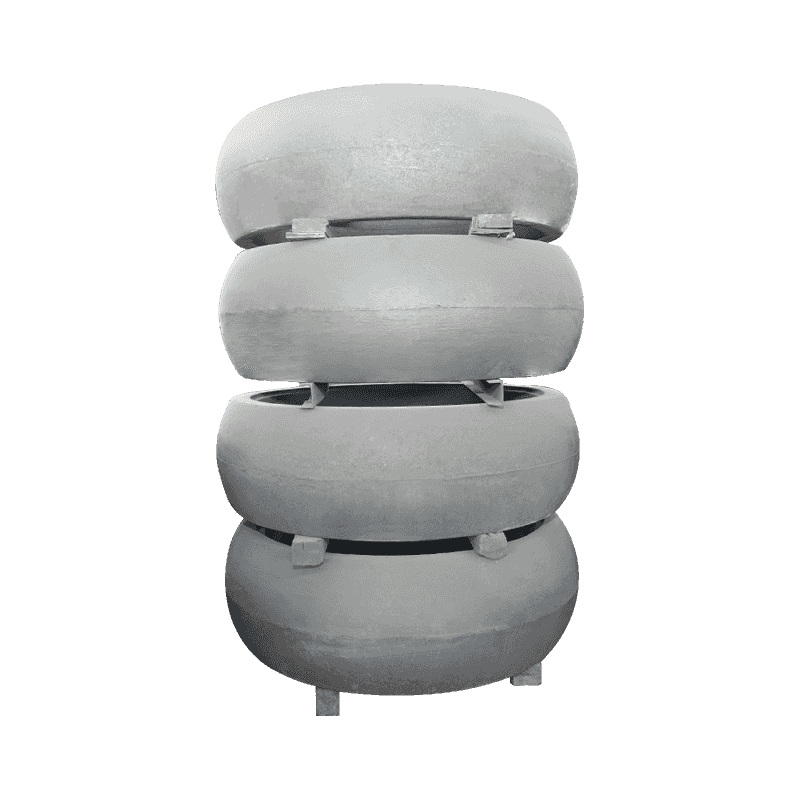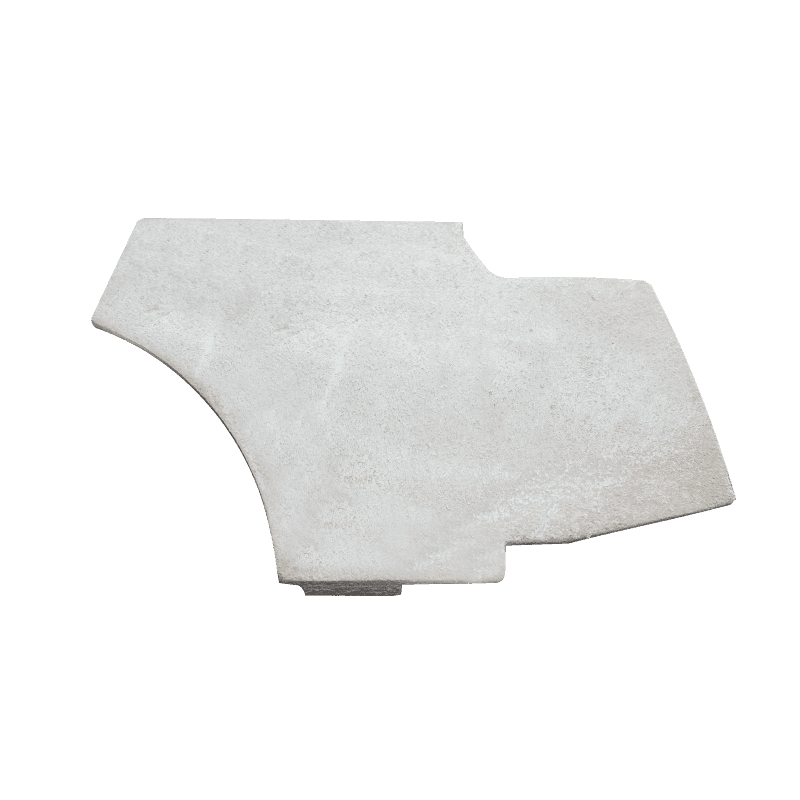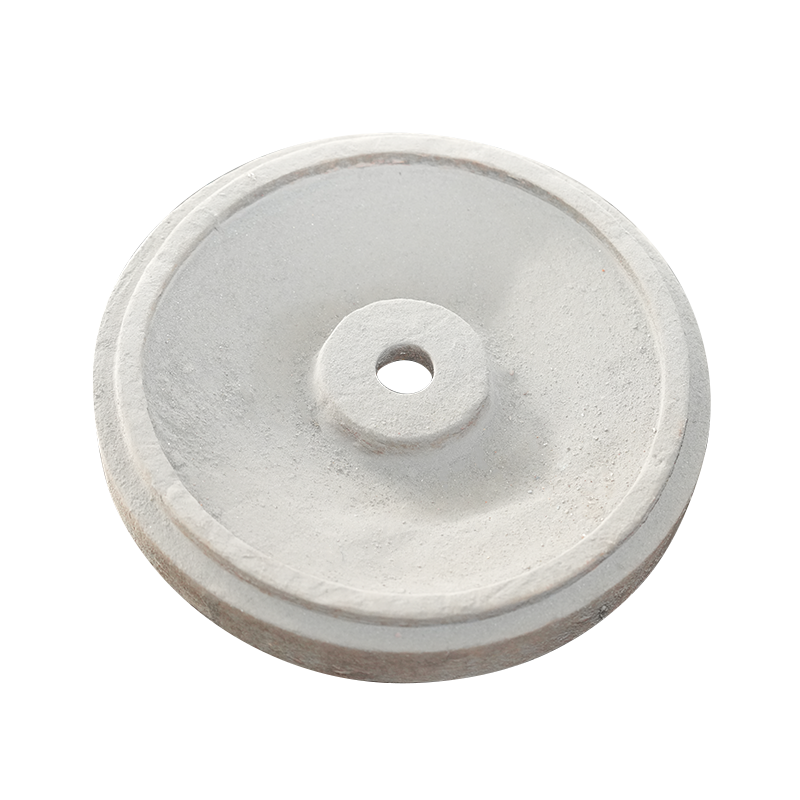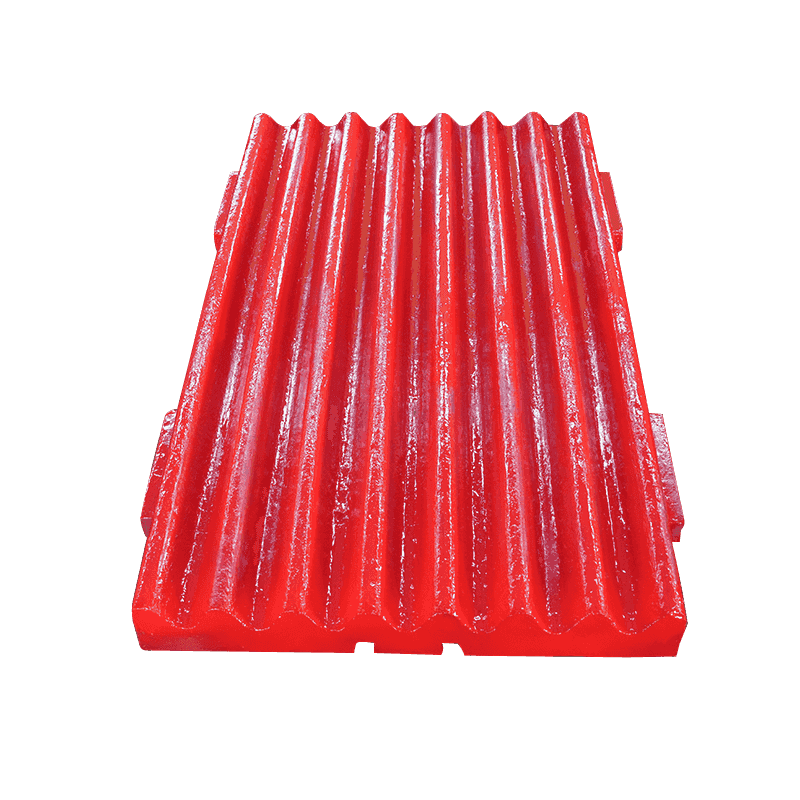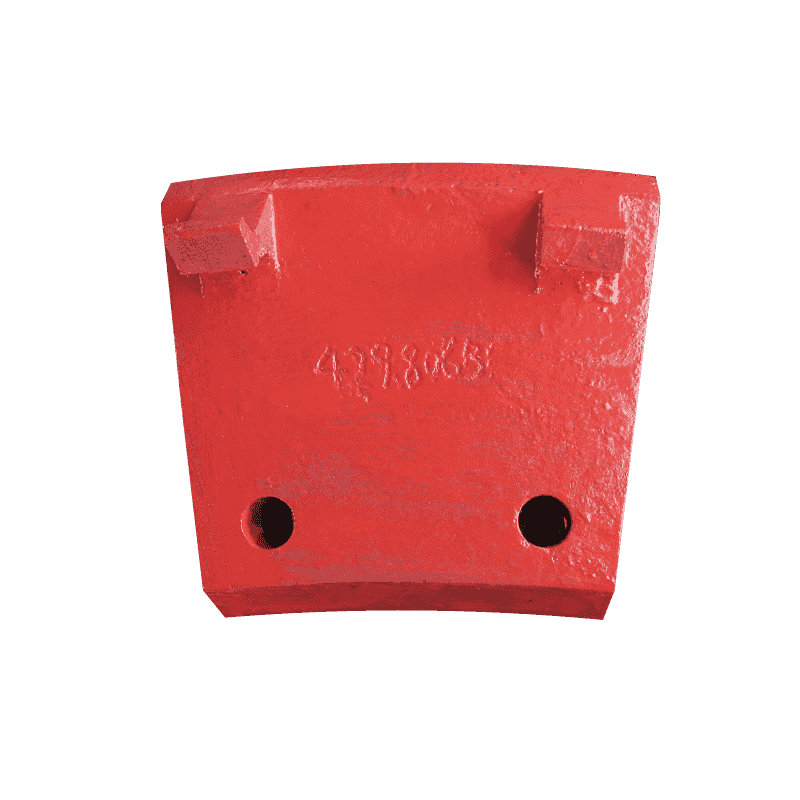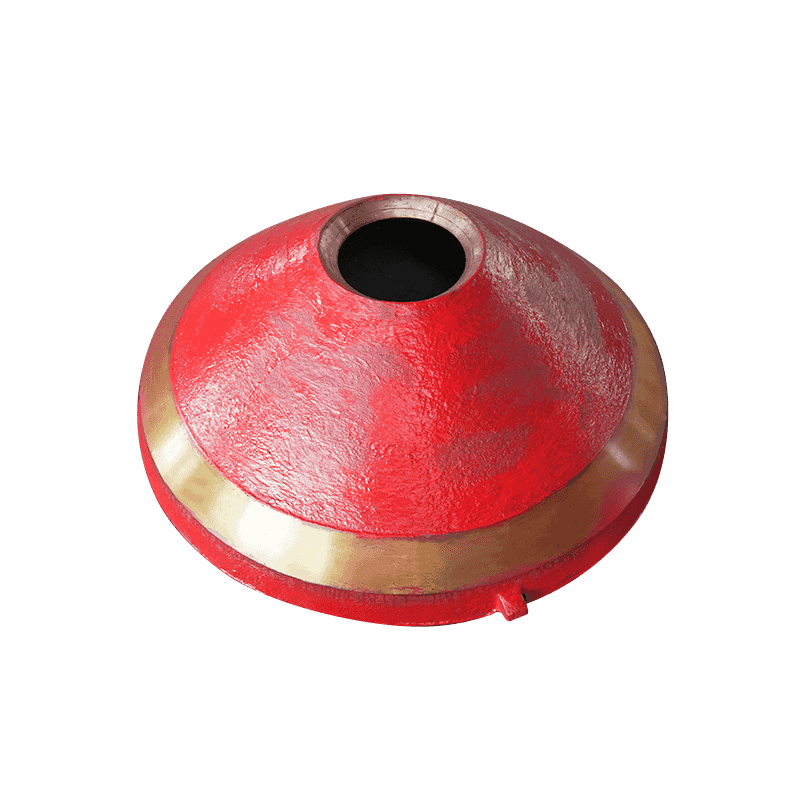How can Cone Crusher high manganese steel mortar wall stand out in high temperature, high humidity and strong corrosion environments?
Cone Crusher high manganese steel mortar wall is famous for its unique self-hardening characteristics and high toughness. On this basis, its performance in complex environments is further strengthened by adding a variety of alloy elements, such as chromium (Cr), nickel (Ni), molybdenum (Mo), etc. While improving wear resistance, these elements significantly enhance the antioxidant and acid-base corrosion resistance of the rolled mortar wall.
Especially in environments with high temperature and high humidity and complex ore composition, such as sulfur-containing ore, salted soil, acidic gangue, etc., traditional materials are prone to pitting, stress corrosion or thermal cracks, while the rolled mortar wall of high manganese steel alloy can effectively delay the corrosion process and ensure the continuous operation of the equipment.
The following table summarizes the functions of the main alloy elements in the rolled mortar wall of Cone Crusher high manganese steel:
| Alloy Element | Functional Description |
|---|---|
| Mn (Manganese) | Provides good work hardening ability and wear resistance to the steel |
| Cr (Chromium) | Enhances oxidation resistance and surface hardness; effectively resists acid and alkali corrosion |
| Ni (Nickel) | Improves structural stability of steel at high temperatures; enhances resistance to thermal cracking |
| Mo (Molybdenum) | Strong resistance to pitting corrosion; especially effective in chloride or sulfur-containing media; enhances chemical corrosion resistance |
| C (Carbon) | Increases matrix hardness; works with manganese to form high-hardness austenitic structure |
Advantages in high temperature and high humidity environments
In actual operations, the working environment of the cone crusher is often accompanied by the following characteristics:
Continuous operation leads to increased equipment temperature:
In modern mining or industrial production lines, cone crushers are in continuous and high-load operation all year round, and there are very few opportunities for shutdown and maintenance. Long-term mechanical movement causes the temperature inside the equipment, especially around the crushing chamber, to continue to rise, easily forming a local high-temperature environment.
In this state, ordinary materials often cause thermal fatigue cracks due to repeated alternation of thermal expansion, cold and contraction, and even cause brittle and broken materials. The high-manganese steel rolled mortar wall improves the structural stability at high temperature by adding Ni elements, can resist structural changes caused by high temperature stress, effectively prevent damage caused by temperature fluctuations, and ensure that it still maintains good mechanical properties under long-term high temperatures.
The crushed material has high moisture content and high humidity:
In actual crushed materials such as ore, coal, construction solid waste, the moisture content is often higher, especially in humid climates in the south or underground mine environment. This type of high-humidity material is very likely to form steam and water films during the crushing process, resulting in:
The surface of the component is continuously eroded by moisture;
Form a humid microenvironment and aggravate corrosion reactions;
The interfacial tension of the material increases, affecting the wear pattern.
In response to the above problems, the chromium (Cr) element in high manganese steel can significantly improve the material's oxidation resistance and water corrosion resistance, and still maintain a low corrosion rate in humid environments. At the same time, the high-toughness matrix structure can prevent material peeling or cracking caused by hydration, greatly extending the service life of the rolling mortar wall.
Some materials contain corrosive components:
Many mineral raw materials to be crushed contain chemical components such as sulfides, acid oxides, chloride ions, etc., such as:
Sulfur-containing ores such as pyrite and molybdenum;
Acid impurities contained in coal;
Industrial waste residue in construction waste.
These chemical media are very prone to chemical reactions with metals, resulting in surface pitting, stress corrosion and even decapitation failure. Especially under the conditions of interweaving humidity and temperature, the corrosion rate further accelerates.
The rolled mortar wall of high manganese steel is formed with a stable corrosion-resistant phase by adding molybdenum (Mo) elements, which can effectively resist the erosion of acidic and alkaline media. At the same time, it forms a dense oxide film during work to prevent corrosion from contact with the steel substrate, thereby delaying corrosion diffusion and protecting the internal structure.
High dust concentration, causing microelectrochemical corrosion:
A large amount of fine dust is generated during the crushing operation. These dusts adhere to the metal surface of the equipment and mix with water vapor or chemical gas in the air to form a weak electrolyte environment. A "micro-cell effect" may even occur in different metal contact areas, inducing electrochemical corrosion.
This type of corrosion usually manifests as local corrosion pits, blackening of materials or peeling of surfaces, which are very easy to be ignored, but long-term accumulation will cause irreversible damage to the rolled mortar wall.
To cope with this hidden corrosion, the multi-element ratio of high-manganese steel rolled mortar walls provides a natural barrier, among which Cr and Mo have particularly significant resistance to electrochemical corrosion, ensuring that they remain stable even in environments with high dust concentration and frequent ionic activity.
Under the above working conditions, traditional materials are often prone to thermal fatigue and corrosion wear, resulting in failure of the rolled mortar wall. The rolled mortar wall of the high manganese steel alloy can form a dense oxide film, block chemical media erosion, maintain high toughness and crack resistance, significantly extending its service cycle. Data shows that its service life can be increased by more than 30% compared with ordinary manganese steel.
Application scenarios and adaptability
Cone Crusher High Manganese Steel Mortar Wall is widely used in broken environments as follows:
Metal mines: high hardness and highly corrosive minerals such as iron ore, copper ore, nickel ore
Non-metallic mines: quartz sand, feldspar, fluorite and other sulfur-containing non-metallic materials
Coal industry: acidic wet coal layer such as coal gangue, sulfur-containing coal
Building materials industry: concrete recycling materials, bricks, tile and tile debris, construction waste, etc. Salt-alkali solid waste
In these applications, the Cone Crusher high-manganese steel rolled mortar wall not only maintains high strength and high toughness, but also has good self-healing and re-hardening capabilities due to the synergistic effect of alloy elements, which can form multiple hardening layers in repeated impacts, delaying the wear process.

 English
English  русский
русский  عربى
عربى 